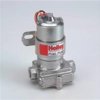Hi all, I'm new to the forum and looking forward to gaining a lot of knowledge. I'm am building a 23 TB and I'm currently in the process of laying out the fuel line plan.
I'm using a late model 5,0 liter ford now carb converted. I like the idea of regulating the fuel pressure but am not fond of return lines. My question is, do I need a return line or do they make fuel pumps that can be regulated without a return?
Your feedback is greatly appreciated.
I'm using a late model 5,0 liter ford now carb converted. I like the idea of regulating the fuel pressure but am not fond of return lines. My question is, do I need a return line or do they make fuel pumps that can be regulated without a return?
Your feedback is greatly appreciated.





